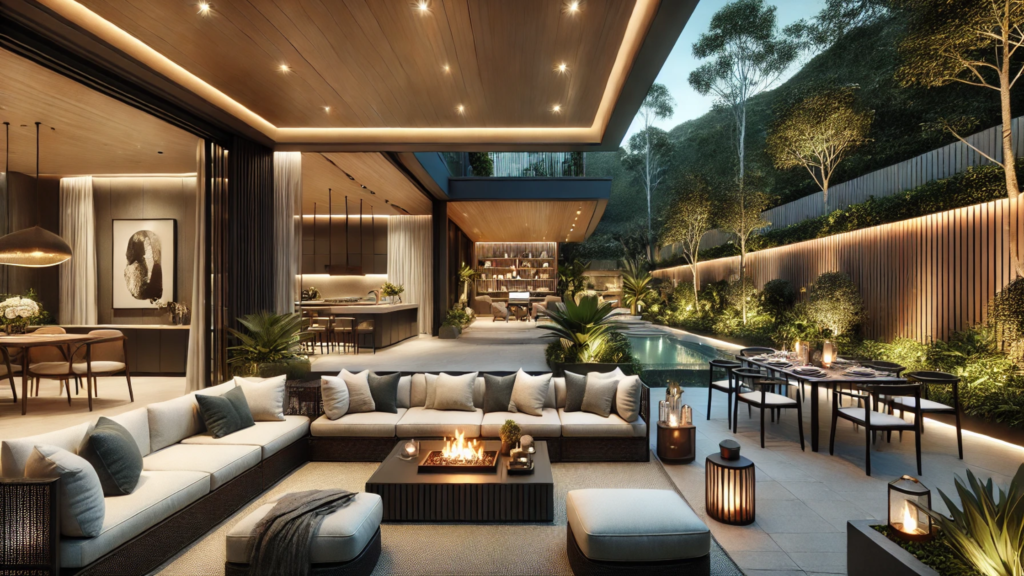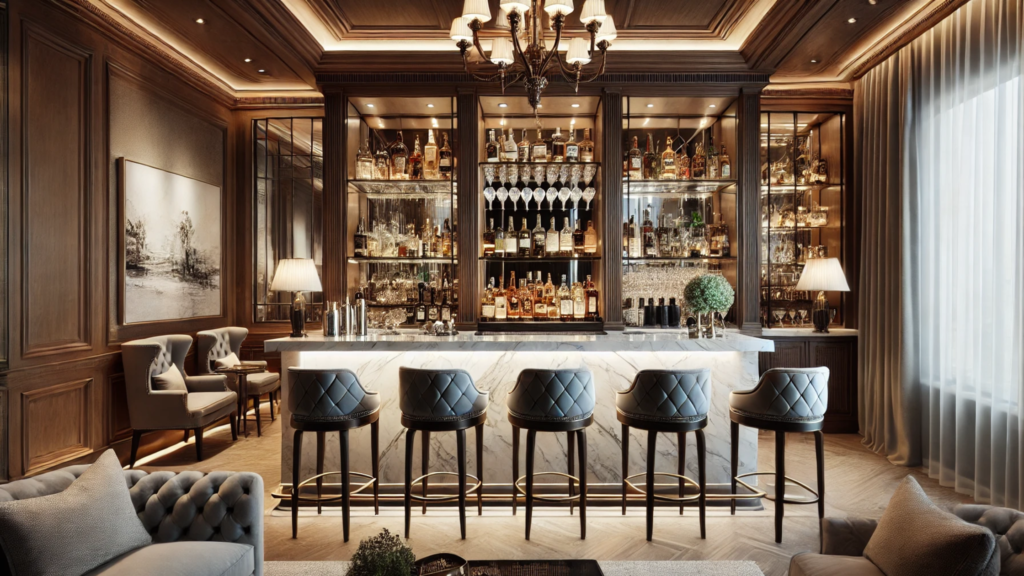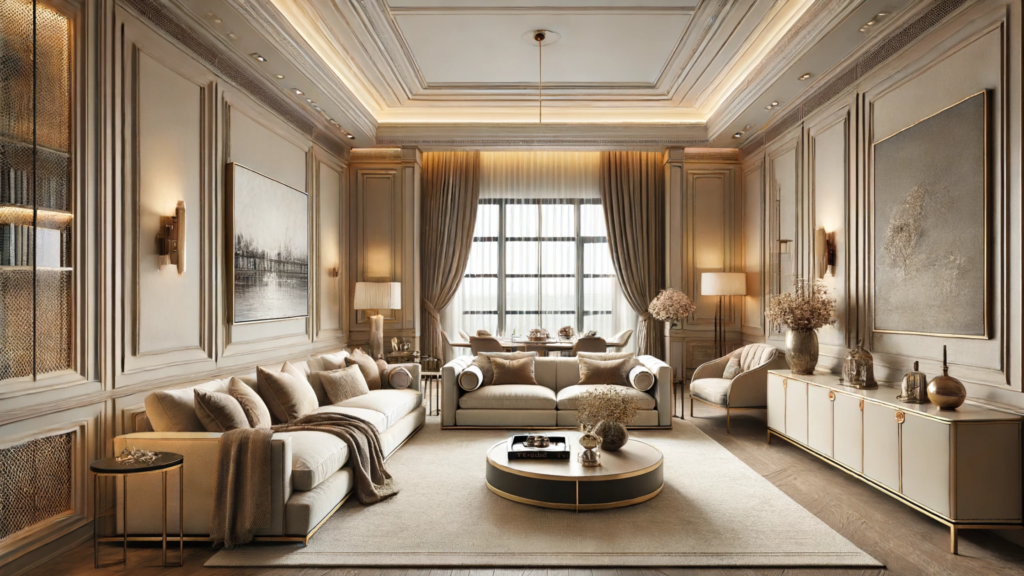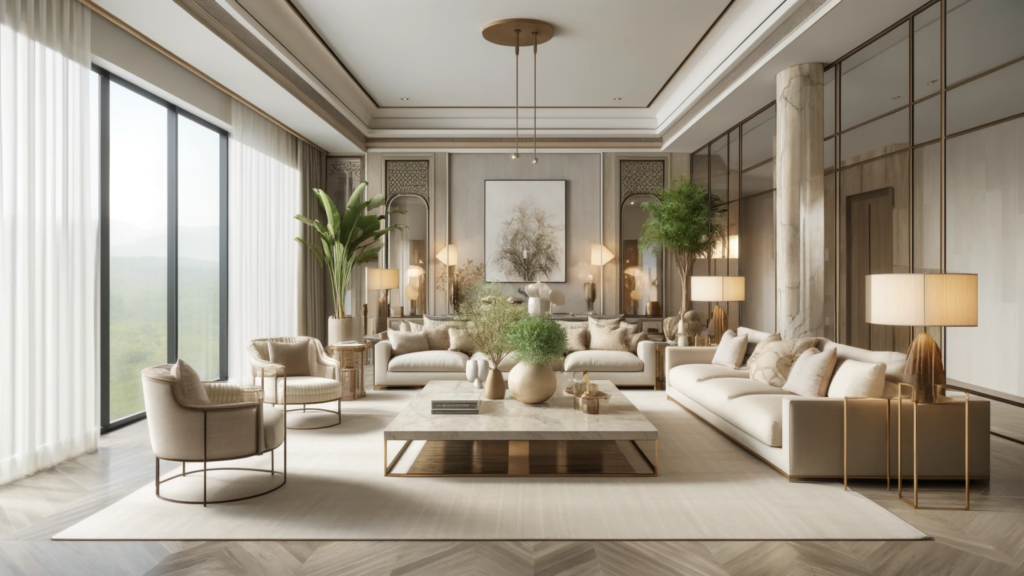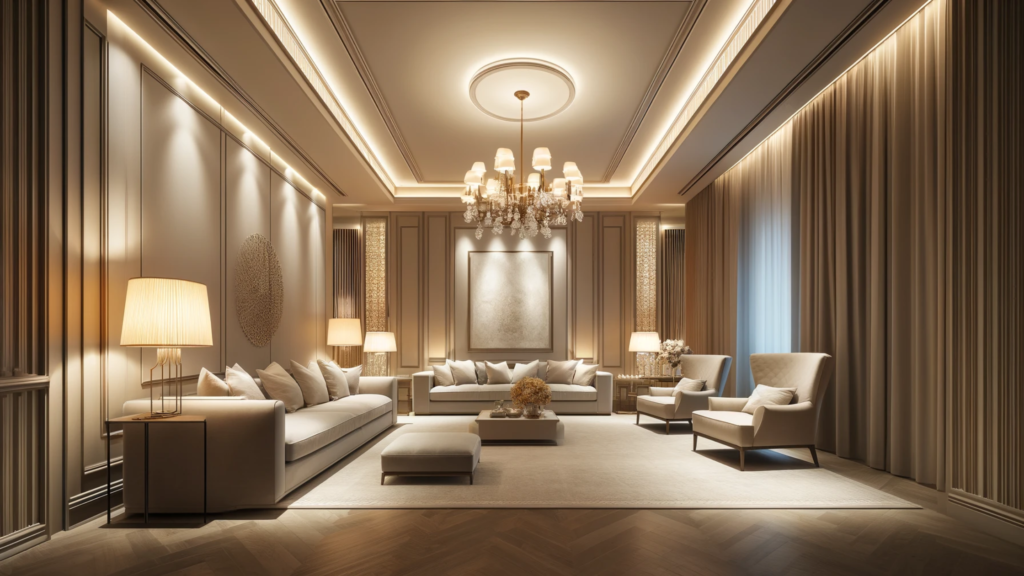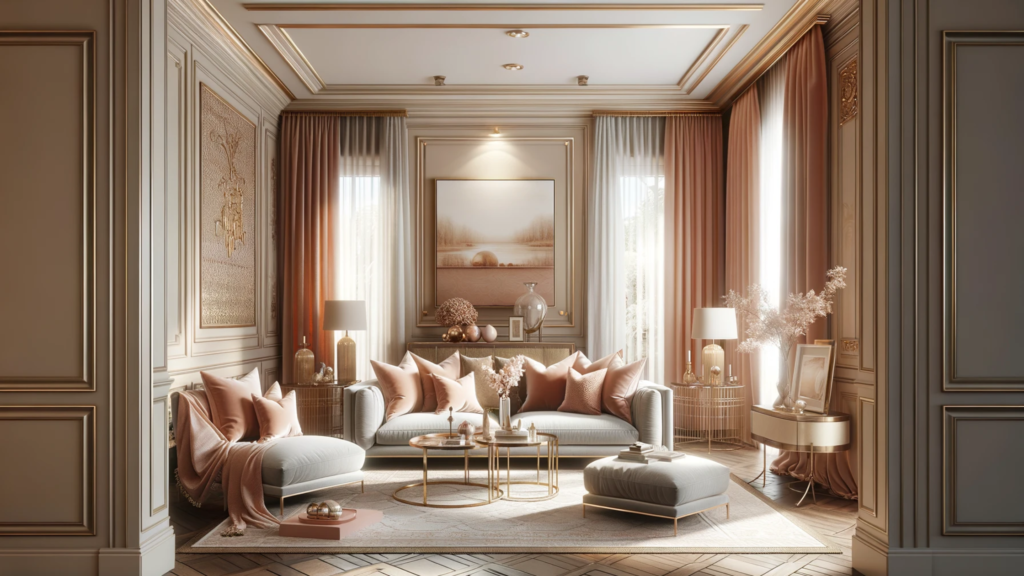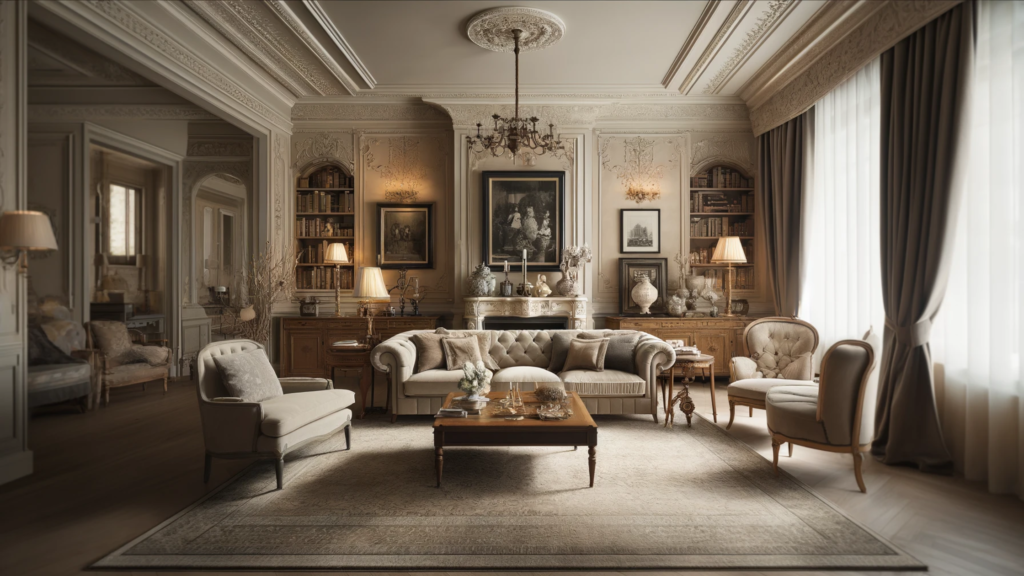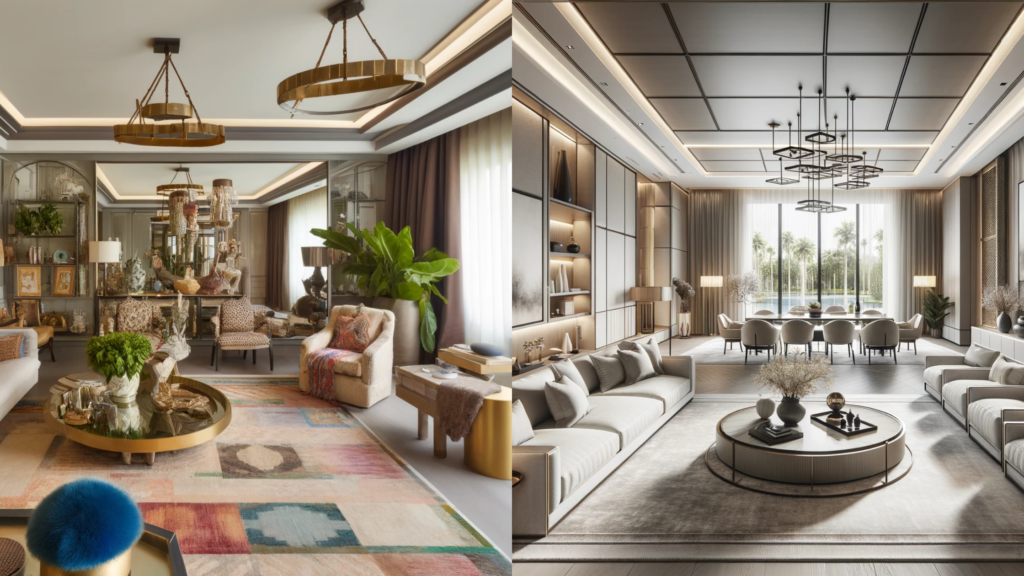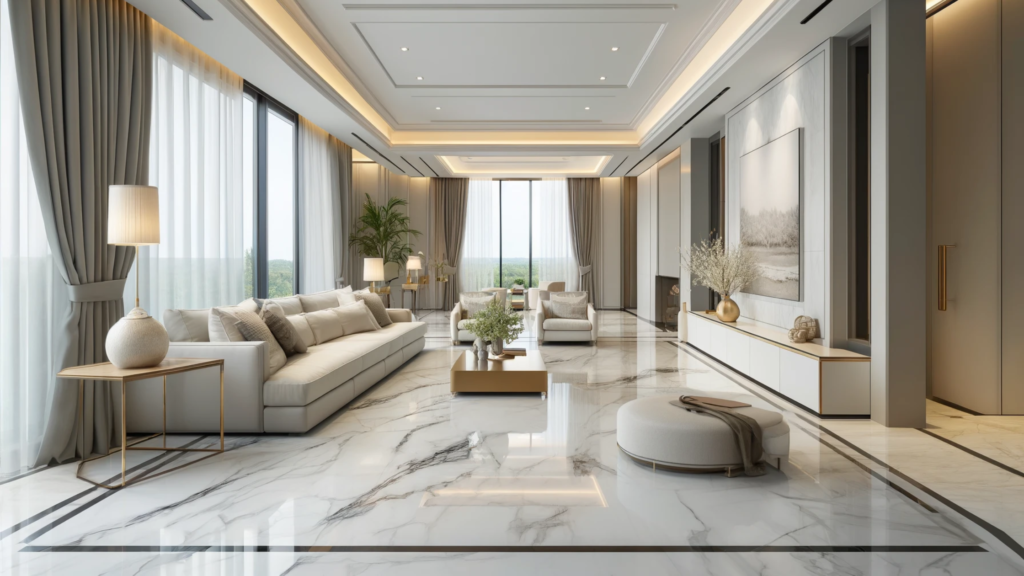Alfresco Spaces in Luxury Interior Design
Alfresco Spaces in Luxury Interior Design Alfresco spaces, derived from the Italian term ‘alfresco meaning ‘in fresh air’, embody the seamless integration of indoor comfort and outdoor freedom. These spaces are designed to extend the living areas of a home into the outdoors, creating environments where one can enjoy nature without sacrificing the luxuries and conveniences of indoor living. The concept of alfresco living has gained significant traction in recent years, particularly in the realm of luxury interior design. Table of Contents Key Elements of Alfresco Spaces Outdoor Furniture: Materials, Comfort, and Style Outdoor furniture is the cornerstone of any alfresco space. The choice of materials is crucial for durability and aesthetics. High-quality materials such as teak, wrought iron, and all-weather wicker are popular for their ability to withstand the elements while maintaining a stylish appearance. Teak, for instance, is known for its natural resistance to water and pests, making it ideal for outdoor use. Wrought iron offers a classic, elegant look, and can be treated to resist rust and corrosion. Comfort is another essential aspect. Plush cushions made from weather-resistant fabrics like Sunbrella provide both comfort and longevity, ensuring that the furniture remains inviting and in good condition despite exposure to the elements. Lighting: Creating Ambience with Outdoor Lighting Lighting plays a pivotal role in creating the right ambience in alfresco spaces. A well-thought-out lighting plan combines different types of lighting to serve various purposes. Ambient lighting, such as string lights or lanterns, provides a warm, inviting glow that makes the space feel cosy and welcoming. Task lighting, like spotlights or pendant lights over dining areas, ensures that the space is functional and practical. Accent lighting can be used to highlight specific features, such as architectural elements, sculptures, or water features, adding depth and interest to the design. Solar-powered lights are an eco-friendly option that harnesses natural energy, reducing the environmental footprint while enhancing the outdoor space. Textiles: Use of Weather-Resistant Fabrics Textiles bring colour, texture, and comfort to alfresco spaces. However, they must be chosen carefully to withstand outdoor conditions. Weather-resistant fabrics like Sunbrella are engineered to resist fading, mould, and mildew, ensuring longevity and maintaining their vibrant appearance. These fabrics are used for cushions, pillows, rugs, and even outdoor curtains, adding a layer of luxury and comfort while being practical for outdoor use. Greenery: Incorporating Plants and Natural Elements Incorporating greenery is essential for creating a serene and inviting alfresco space. Plants not only enhance the aesthetic appeal but also improve air quality and provide a natural cooling effect. Consider a mix of potted plants, vertical gardens, and strategically placed shrubs to create a lush, green environment. Natural elements like stone, wood, and water can also be integrated into the design. For instance, a wooden pergola can provide shade and structure, while stone pathways and planters add a rustic, organic feel. Water Features: Adding Luxury with Fountains and Pools Water features are a hallmark of luxury alfresco spaces, adding a sense of tranquillity and sophistication. The sound of flowing water from fountains or waterfalls can create a calming atmosphere, making the outdoor space more relaxing. Pools, whether full-sized or smaller plunge pools, offer both aesthetic appeal and functional benefits, serving as focal points for recreation and entertainment. For smaller spaces, consider features like tabletop fountains or wall-mounted water elements that provide the soothing benefits of water without taking up much space. By carefully selecting and integrating these key elements, homeowners can create alfresco spaces that are not only beautiful and inviting but also functional and enduring, offering a seamless extension of their indoor luxury living. Designing Your Alfresco Space Planning and Layout The first step in designing an alfresco space is planning the layout to maximise space and ensure a natural flow. Begin by assessing the available area and identifying the primary functions you want the space to serve, such as dining, lounging, or entertaining. Create distinct zones for each activity, ensuring there is enough room for movement and interaction between these areas.Consider the orientation of your space in relation to the sun and prevailing winds to optimise comfort. Use outdoor rugs, planters, and low walls to define different areas without obstructing the flow. Style and Theme Choosing a cohesive design theme is crucial for creating a visually appealing alfresco space. Your outdoor area should reflect the overall aesthetic of your home while also embracing its unique outdoor environment. Decide on a theme that resonates with your personal style and complements your home’s architecture. Select a consistent colour palette that enhances the natural surroundings and ties the various elements of your space together. For instance, neutral tones can provide a serene backdrop, while bold colours can add vibrancy and energy. Select a consistent colour palette that enhances the natural surroundings and ties the various elements of your space together. For instance, neutral tones can provide a serene backdrop, while bold colours can add vibrancy and energy. Functionality Functionality is key to a successful alfresco design. The space should cater to your lifestyle and needs, whether it’s hosting large gatherings, enjoying quiet family dinners, or creating a personal retreat. Start by listing the essential features you require, such as a dining area, cooking station, lounging zone, or play area for children. Consider the practical aspects like weather conditions and maintenance. Comfort and Luxury To elevate your alfresco space, focus on comfort and luxury. High-end amenities not only enhance the aesthetic appeal but also provide a sense of indulgence and relaxation. Start with comfortable seating options featuring plush, weather-resistant cushions and ergonomic designs. Consider adding a mix of seating types, such as sofas, lounge chairs, and hammocks, to create a versatile and inviting environment. Incorporate luxury features like an outdoor kitchen or bar for seamless entertaining. Trends in Alfresco Design Outdoor interior design is continually evolving, with new trends emerging to enhance the functionality, aesthetics, and sustainability of alfresco spaces. Here’s an in-depth look at some of the current trends: Sustainable Design: Eco-Friendly Materials and Practices Sustainable design

